Public transport in Amsterdam:
Info, tips, plans for metro, tram, buses and ferry.
In our travel guide, we show you how to discover Amsterdam by public transport. Tips on how to save time and money when buying tickets can be found below.
Local transport – ideal for discovering Amsterdam
Amsterdam has a modern public transport system. The narrow streets and canals of the historic city centre are not designed for cars. That is why the city makes great efforts to provide efficient and affordable local transport.
Public transport is a good way to explore Amsterdam
If you want to discover the city on your own, public transport is the key.
We would like to share information and tips about public transport in Amsterdam. Our tips on buying tickets can save you time and money. The city is too beautiful to waste your holiday time buying tickets and understanding fare systems.
Of course, you can also download route maps, current ticket prices from 2024 and much more.
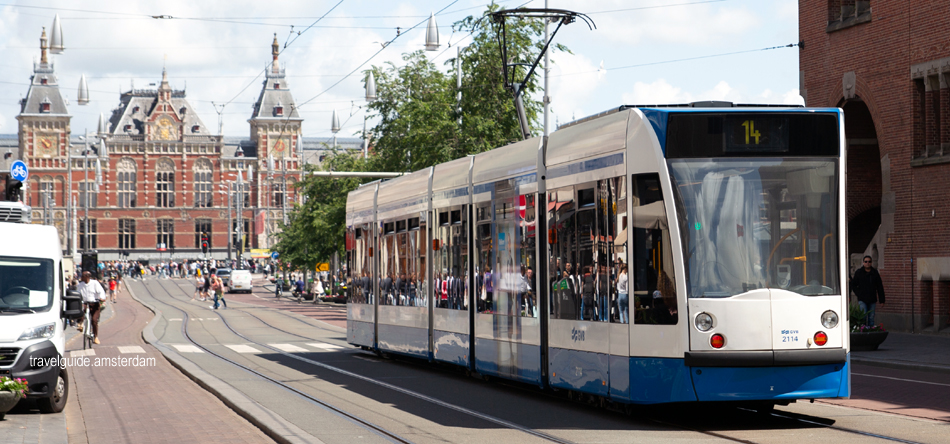
Amsterdam has a very good local transport system – ideal for discovering the city (Image: travelguide.amsterdam)
Tickets for public transport in Amsterdam:
Which ticket option is best for me?
Whether single ride via e-purse, also referred to as OV-card, all-day ticket, “I Amsterdam Card”, or “Amsterdam Travel Card”, you will find detailed information for all, as well as current fares here.
It allows you to quickly and easily find the right ticket option for your stay in Amsterdam. Researching all options upfront and knowing which ticket option works best for you, will save you money and time after arrival and prevent stressful situations.
Our advice – when you don’t want to deal with the tariff system and ticket machines:
The single-day or multi-day tickets that are available for the public transport system in Amsterdam are typically the best choices for visitors.
These tickets allow unlimited use of the Metro (subway), GVB bus system, trams, as well as ferries for the entire period of validity (1 – 7 days).
These tickets are rather inexpensive for a European metropolitan city. For 2024 fares range between €5.85 and €9 a day, depending on period of validity.
You can purchase these tickets online before your trip without additional fees via the website of the authorised GVB ticket seller – click here –. You will not have to deal with ticket machines or the tariff system upon your arrival.
That saves time and nerves – after all, you will have better things to do in Amsterdam…
Discover Amsterdam by car?
Parking spaces in the city centre are expensive and all sights and museums are easily accessible by metro, tram or bus.
Therefore, many tourists and visitors use public transport to discover Amsterdam.
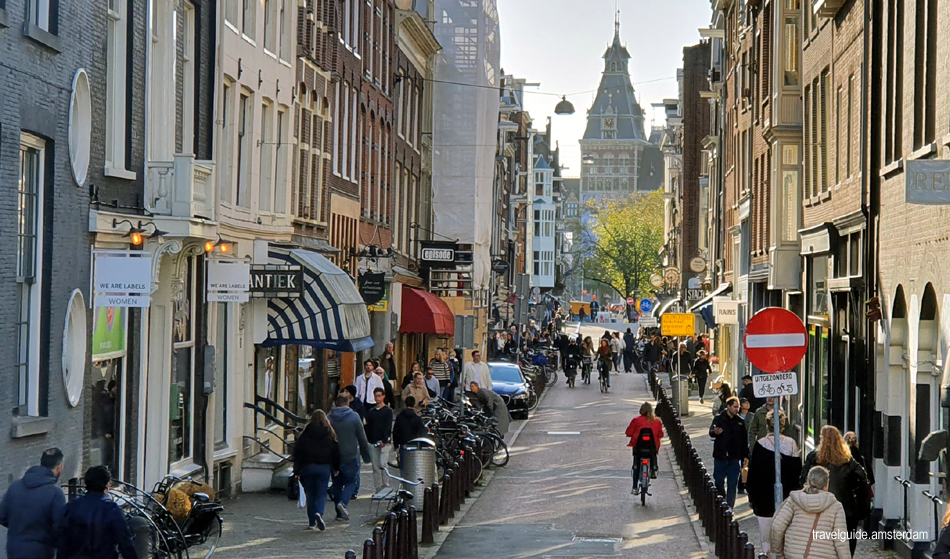
A typical street in Amsterdam’s canal belt. Driving a car and looking for a parking space is no fun here. By public transport, you can reach your destination faster and easier.
Driving is no fun in the canal belt …
Amsterdam’s old town, where most of the sights are located, consists of a system of canals. A lot of the original buildings are still there. The streets and alleys are narrow, and were not planned for car traffic in the 17th century.
Because Amsterdam and car traffic do not go together, the city relied on bicycles and modern local transport early on. With the metro, trams and buses, you can get around the city quickly and easily.
When to use which public transport mode?
Public transport in Amsterdam is operated by the municipal public transport company GVB. 2024 Amsterdam has 5 metro lines, 15 tram lines, 34 bus lines and 9 ferry lines.
We show you here in a short overview for which purposes you can best use metro, tram, bus or ferry.
Details such as route maps or timetables for the individual means of transport can be found on the respective page on this topic.
Metro / underground in Amsterdam
The metro in Amsterdam is relatively new and therefore modern and efficient. The first two metro lines were opened in 1977. Today, 5 metro lines are operated by the municipal public transport company GVB.
A major step in 2018 was the construction of the new metro line 52, which involved tunneling under the IJ estuary for the first time. This connects the north of Amsterdam to the metro network.
When to use the metro in Amsterdam?
If you want to cover a long distance quickly, the metro is a good means of transport. In the city centre, most of the lines are underground. Therefore, it is not suitable for sightseeing.
→ More information in this travel guide:
Metro / Subway in Amsterdam. Route map, map and practical tips
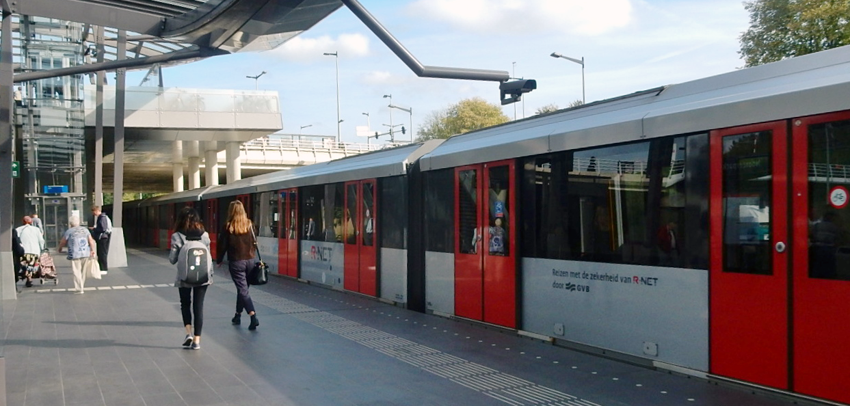
The metro takes you quickly through the city – in the city centre underground – in the outer districts mostly above ground (Image: M. Coghlan, CC 2.0 licence)
City buses – backbone of local transport
In 2024, 33 GVB bus lines will be operating in Amsterdam. They form the backbone of the local transport system and serve the areas that are not served by the tram.
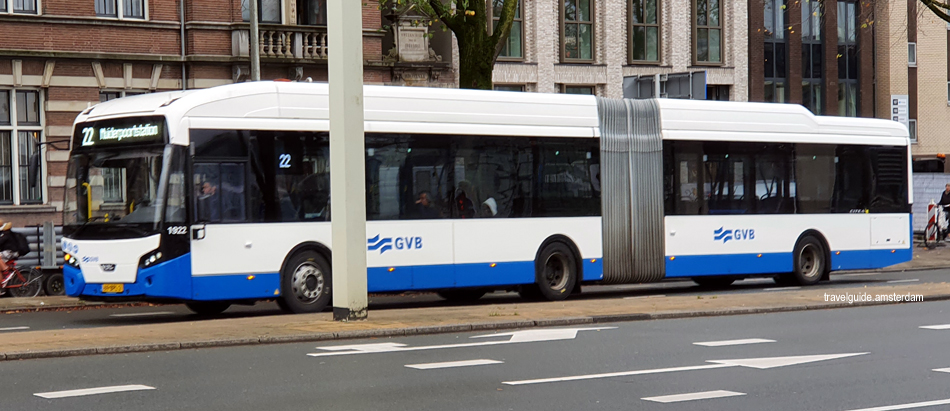
The blue and white GVB buses form the backbone of Amsterdam’s public transport system.
Amsterdam Central Station – central bus station
Amsterdam Centraal station is also a central hub for local transport. The new central bus station is attached directly to the station building. The central bus station is a stop for many city and regional bus lines. All bus stops that were previously distributed around the station have been brought together here. The bus station has a distinctive glass roof with the word “Amsterdam” in coloured glass panes. This is why the bus station is also a popular photo motif.
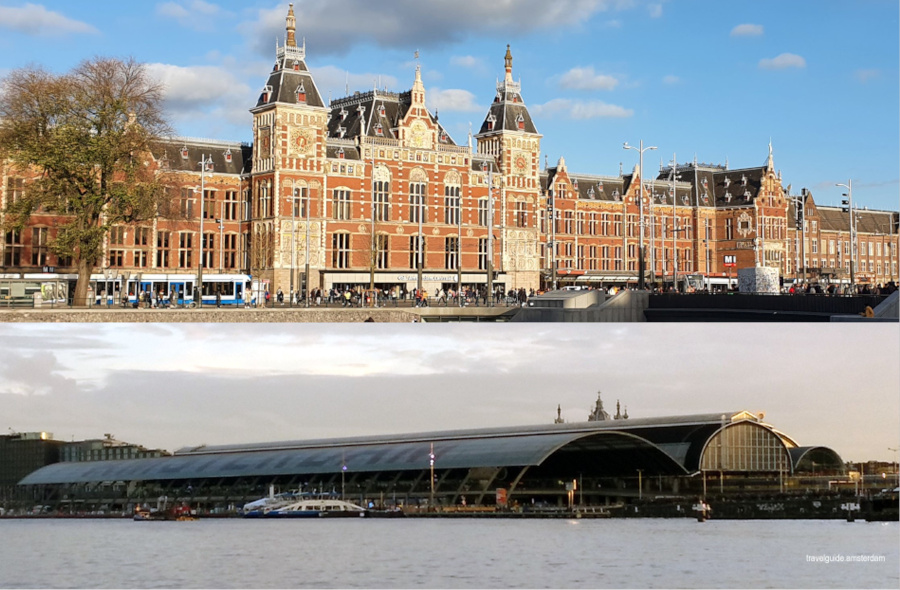
The front and back of Amsterdam Centraal station. The station is the central hub for local transportation. Here you can change between international trains, metro, streetcar, bus and ferry. The central hub for local transport is Amsterdam Centraal station. The city’s central bus station is attached directly to the station. The glass roof with the “Amsterdam” lettering is a landmark of the city.
Regional bus services in Amsterdam
Bus services to the surrounding towns and cities are not operated by the city’s public transport company, GVB. Private bus operators such as Connexxion, Keolis /Syntus or EBS are active here. Many of the GVB local transport tickets are not valid on these buses.
→ More information in this guide:
Local transport tickets Amsterdam: How to find the right ticket
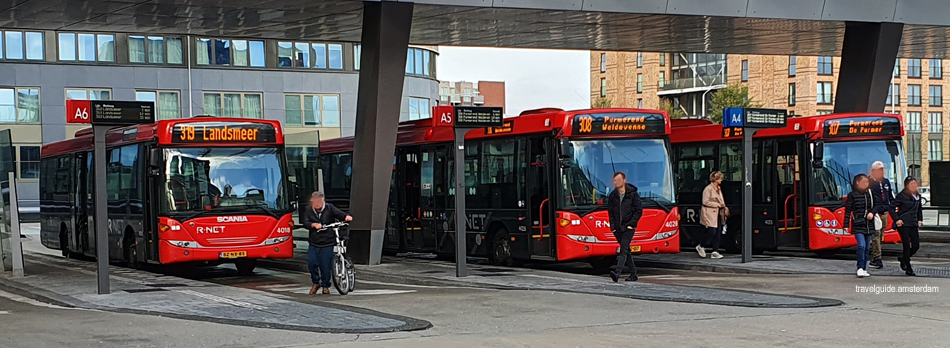
Local transport connections to surrounding towns and cities are provided by buses operated by private operators.
Shuttle bus to the airport
The popular shuttle bus 397 to Schiphol Airport is not operated by the municipal public transport company GVB, but by Connexxion.
→ More information in this guide:
Airport bus 397 – info, tickets, route, stops
Tram / tramway in Amsterdam
There are currently 15 tram lines in Amsterdam. The tram lines also run through the narrow streets of the canal belt. The tram is popular with tourists. It allows you to move quickly through the old town and see a lot of the city.

Sightseeing by local transport. As the tram in Amsterdam also travels in the canal belt, it is popular with visitors to the city.
Sightseeing by tram
The tram line 2 is popular for sightseeing. The line takes you to the Flower Market, the Palace on the Dam, the Rijksmuseum, the Van Gogh Museum, the Stedelijk Museum and passes all the canals of Amsterdam’s famous canal belt.
→ More information in this travel guide:
Tram / Tramway in Amsterdam. Route map, map and practical tips
Ferries in Amsterdam
Amsterdam is situated on a former inlet of the Zuiderzee (IJ). Therefore, the 8 ferry lines are an important part of the local transport system.
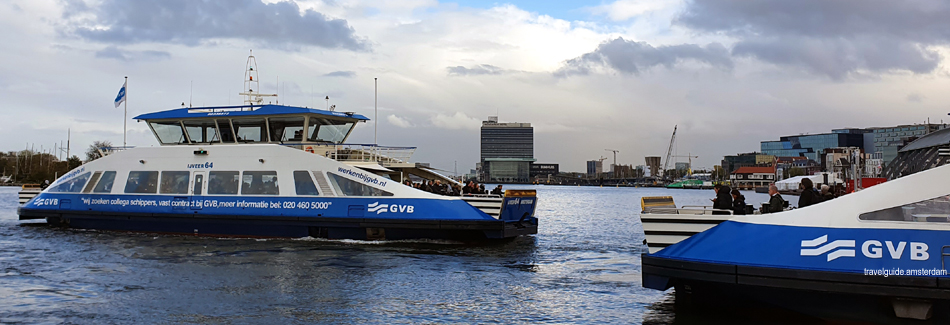
The ferries are an important part of the local transport system in Amsterdam.
Free harbour tour
The use of the GVB ferries is free for pedestrians, cyclists and moped riders. That’s why the ferries are also popular for a free harbour tour.
→ More information in this travel guide:
Ferries in Amsterdam. Route map, map, sightseeing tour and practical tips.
Tickets for public transport in Amsterdam:
Which ticket option is best for me?
Whether single ride via e-purse, also referred to as OV-card, all-day ticket, “I Amsterdam Card”, or “Amsterdam Travel Card”, you will find detailed information for all, as well as current fares here.
It allows you to quickly and easily find the right ticket option for your stay in Amsterdam. Researching all options upfront and knowing which ticket option works best for you, will save you money and time after arrival and prevent stressful situations.
Our advice – when you don’t want to deal with the tariff system and ticket machines:
The single-day or multi-day tickets that are available for the public transport system in Amsterdam are typically the best choices for visitors.
These tickets allow unlimited use of the Metro (subway), GVB bus system, trams, as well as ferries for the entire period of validity (1 – 7 days).
These tickets are rather inexpensive for a European metropolitan city. For 2024 fares range between €5.85 and €9 a day, depending on period of validity.
You can purchase these tickets online before your trip without additional fees via the website of the authorised GVB ticket seller – click here –. You will not have to deal with ticket machines or the tariff system upon your arrival.
That saves time and nerves – after all, you will have better things to do in Amsterdam…
Traveling with a baby carriage or wheelchair
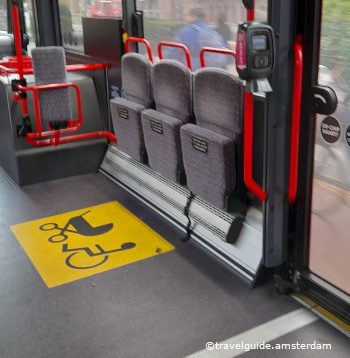
On trams and buses, the wheelchair space is also the stroller space. Wheelchair users have priority over a stroller.
We have a lot of experience traveling with baby carriages. In Amsterdam, it works quite well to travel with a wheelchair or baby carriage on local transport.
Tips & information:
- In contrast to bicycles, there is no charge for taking a baby carriage with you.
- On streetcars and buses, the wheelchair space is also the baby carriage space. Wheelchair users always have priority over baby carriages on public transport in Amsterdam.
- The pushchair/wheelchair space is located in the middle section of the streetcar, next to the exit doors.
Baby carriages must not obstruct other passengers or block the aisles. - On streetcars and buses, the wheelchair space is also the baby carriage space. Wheelchair users have priority over baby carriages.
Frequently asked questions in this travel guide – FAQ 2024
Is local transport in Amsterdam recommended for tourists?
Amsterdam has a modern and well-developed public transport system. The narrow streets and canals of the historic city centre, which is well worth seeing, are not made for the cars of residents and visitors. Parking spaces are very expensive and rare. Therefore, the city makes great efforts to provide efficient and cheap local transport.
There are tram lines and ferries that are popular for sightseeing. More information in our travel guide
Is local transport expensive in Amsterdam?
Amsterdam wants to be as car-free as possible. That’s why Amsterdam has a well-functioning and modern public transport system. With the right ticket, using local transport is easy and cheap.
In our travel guide you will find tips and information on how to discover Amsterdam by public transport. You can save time and money with our tips on buying tickets.
With a baby carriage on local transport in Amsterdam - does it work well?
In Amsterdam, it works quite well to travel on public transport with a wheelchair or baby carriage.
- In contrast to bicycles, there is no charge for taking a baby carriage with you.
- On streetcars and buses, the wheelchair space is also the baby carriage space. Wheelchair users always have priority over baby carriages on Amsterdam’s public transport system.
You can find more information on this topic in our free online travel guide.
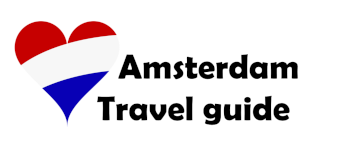

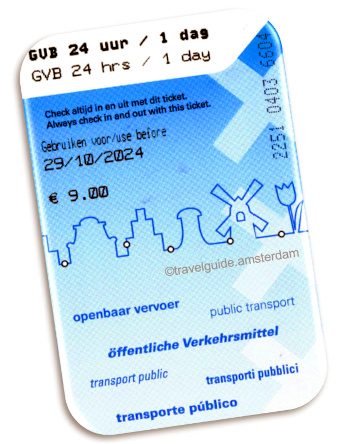
Leave a Reply
Want to join the discussion?Feel free to contribute!